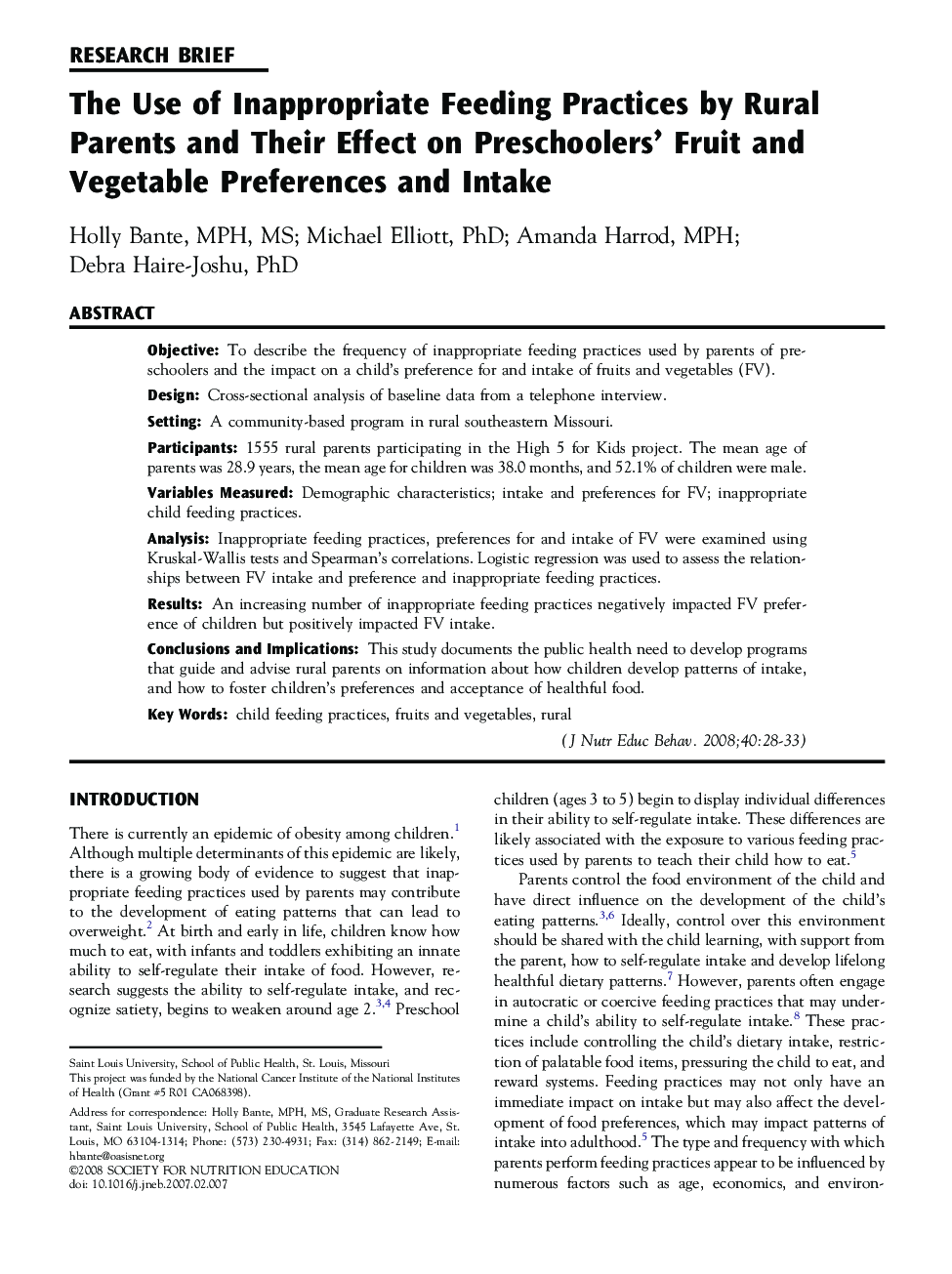| Article ID | Journal | Published Year | Pages | File Type |
|---|---|---|---|---|
| 362448 | Journal of Nutrition Education and Behavior | 2008 | 6 Pages |
ObjectiveTo describe the frequency of inappropriate feeding practices used by parents of preschoolers and the impact on a child’s preference for and intake of fruits and vegetables (FV).DesignCross-sectional analysis of baseline data from a telephone interview.SettingA community-based program in rural southeastern Missouri.Participants1555 rural parents participating in the High 5 for Kids project. The mean age of parents was 28.9 years, the mean age for children was 38.0 months, and 52.1% of children were male.Variables MeasuredDemographic characteristics; intake and preferences for FV; inappropriate child feeding practices.AnalysisInappropriate feeding practices, preferences for and intake of FV were examined using Kruskal-Wallis tests and Spearman’s correlations. Logistic regression was used to assess the relationships between FV intake and preference and inappropriate feeding practices.ResultsAn increasing number of inappropriate feeding practices negatively impacted FV preference of children but positively impacted FV intake.Conclusions and ImplicationsThis study documents the public health need to develop programs that guide and advise rural parents on information about how children develop patterns of intake, and how to foster children’s preferences and acceptance of healthful food.
